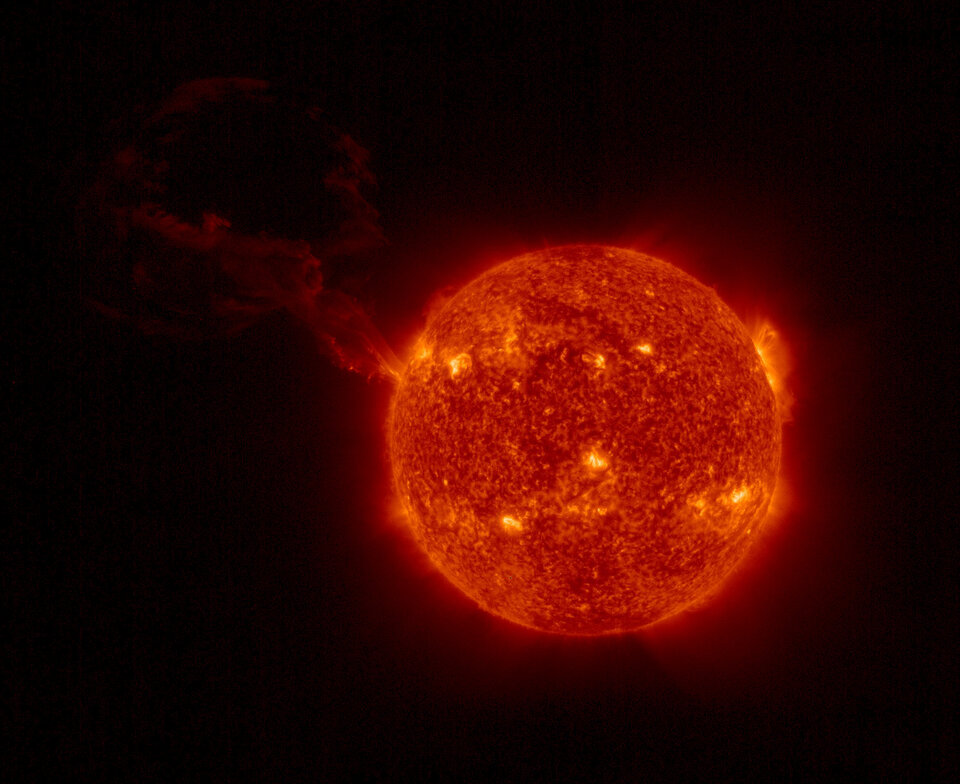Earlier this week the Sun erupted with a huge explosion, blasting solar particles millions of kilometers into space. The team for the ESA/NASA Solar Orbiter spacecraft says the blast is the largest solar prominence eruption ever observed in a single image together with the full solar disc.
Luckily for us here on Earth, the eruption on February 15, 2022 occurred on the farside of the Sun, the side facing away from our planet. But ESA and NASA predict geomagnetic storms are possible in the next few days as the active region on the Sun responsible for the blast turns toward us.
The event was captured by several spacecraft, including Solar Orbiter and STEREO A.
A solar prominence consists of red-glowing loops of plasma, structured by tangled magnetic field lines generated by the Sun’s internal dynamo. An erupting prominence occurs when such a structure becomes unstable and bursts outward, releasing the plasma. They are often associated with outbursts of charged particles called coronal mass ejections (CMEs), which if directed towards Earth, can wreak havoc with our space-based technology.
Evidence of that came last week when SpaceX lost up to 40 of their recently launched 49 Starlink internet satellites after several CMEs erupted. The solar particles affected Earth’s atmosphere — ‘puffing’ it up, so to speak — making it difficult for the satellites to maintain their orbits. In a statement on February 8, SpaceX said “the escalation speed and severity of the storm caused atmospheric drag to increase up to 50 percent higher than during previous launches.”
The Sun has definitely increased in activity the past few months, and this latest event on February 15 zapped two “sungrazer’ comets that came close to the Sun.
Other space missions were also able to observe the event, including the SOHO (Solar and Heliospheric Observatory) spacecraft. Here’s a side-by-side comparison of Solar Orbiter and SOHO’s view:
Spaceweather.com is always a good source for finding updates on solar activity and any alerts of impending events.
This video from NASA Goddard is a good explainer of solar events and activity.

